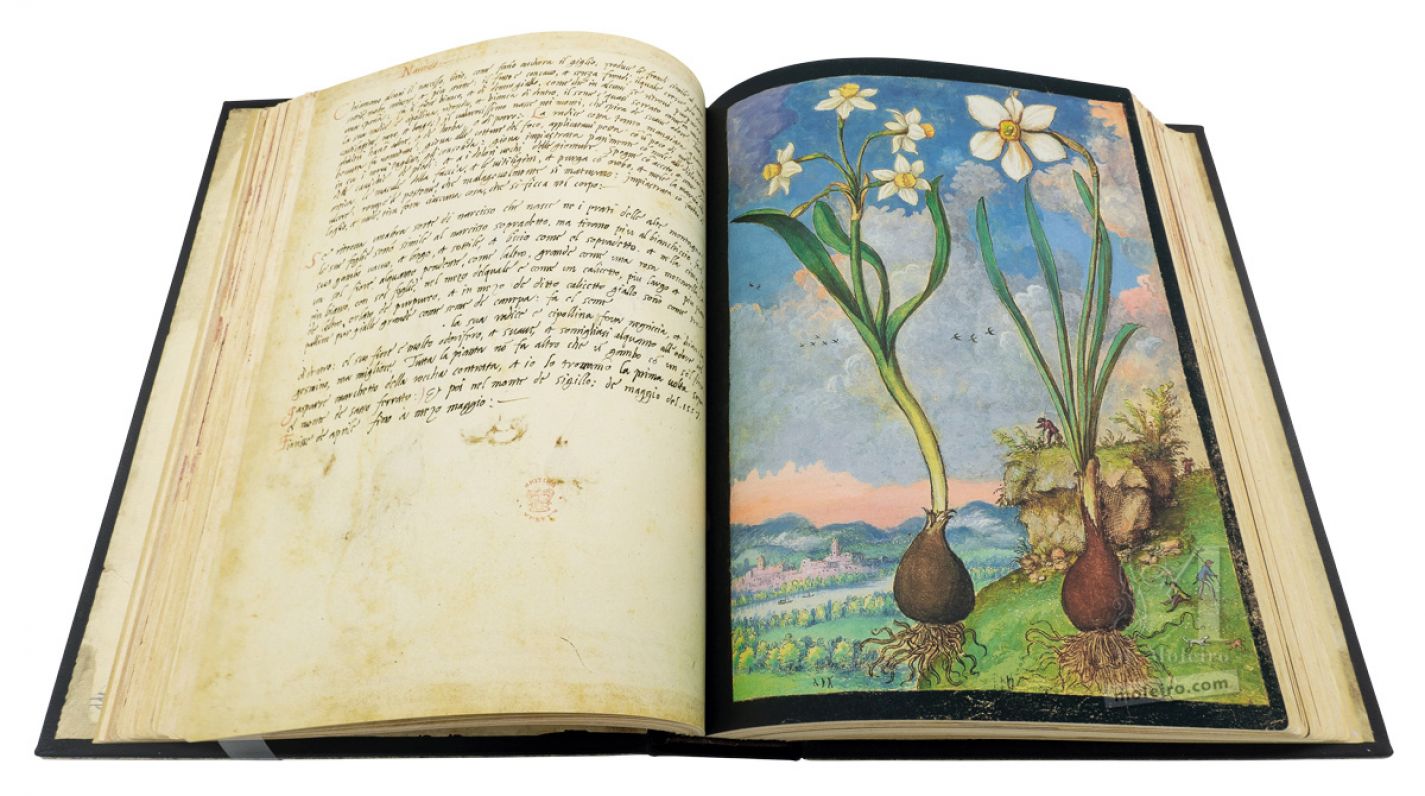Some people call the daffodil lirio, as they do with the lily. It has thin leaves like those of the leek, but they are much smaller and narrower; the stem is hollow, without leaves, and grows to a height of over a span; the flower is white, yellow inside and in some cases reddish; the root is onion-shaped, rounded, and white inside; the seed is enclosed in a sort of capsule, black and long. The finest flowers grow on the mountains and emit a sweet scent; the others all smell of grass or leek. The cooked root, both eaten and drunk, induces vomiting; pounded with a little honey and applied, it gives relief to burns; put on severed sinews, it knits them together; applied as a poultice with honey, it also relieves sprains of the ankles and long-term joint pains. With vinegar and nettle seed it reduces blemishes on the face and vitiligo; with honey and vetch it cleans pus from ulcers; it causes the bursting of abscesses that are not coming to a head; applied as a poultice with darnel flour and honey, it expels any foreign bodies lodged in the flesh.
There is another variety of daffodil which grows in pastures in the high mountains; its leaves are similar to those of the other daffodil, but tend to be paler; its stem is also like that of the other, hollow, long, thin and smooth. At its top it produces a single flower, hanging down a little, like the other, as large as a musk rose and whiter, with six petals and in the middle a little calyx, larger and flatter than the other, with a red border. And in the middle of this yellow calyx there are three tiny balls, also yellow, each the size of a hemp seed; it forms its seed […]. Its root is onion-shaped, blackish on the outside and white inside. The flower is very highly scented, with a sweet fragrance a little like that of jasmine, but better. The whole plant has just one stem with a single flower. Gaspare Marchetto of Rocca Contrada and I found it for the first time under Monte Sassoferrato and then on Monte Sigillo, in May 1557. It flowers from April to mid-May. (f. 58v)
The bunch-flowered daffodil or Narcissus tazetta, depicted on the left, grows in meadows and forest clearings almost everywhere in Italy, France, the Mediterranean region, in northeastern Spain and is cultivated in the rest of the country. The Pheasant’s eye or Narcissus poeticus, on the right, grows in almost all of Italy but is rarer in the north, in northeastern Spain, in France and southern Europe. It is naturalized in England. According to legend, Narcissus fell in love with his own image. Entranced by his reflection in a lake, he collapsed and was turned into a flower. Many species of the Narcissus genus do indeed grow in damp meadows or alongside waterways. The Iberian Peninsula is the region with the greatest variety of daffodils – 33 species and subspecies – which suggests that this is where this genus originated. Eight species of this genus grow in Italy. Since the seventeenth century, Central European horticulturists have gathered narcissi in Spain, which is why many species were described by gardeners from cultivated specimens, some created by hybridization, resulting in considerable systematic confusion.
Ramón Morales Valverde
Real Jardín Botánico de Madrid
(Extract from the commentary volume of Mattioli's Dioscorides illustrated by Cibo)
